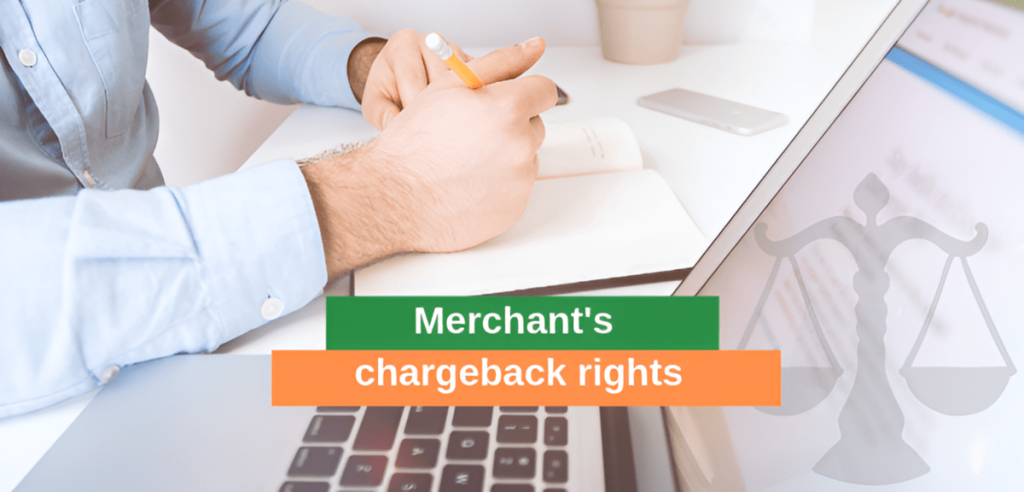What is a Chargeback?
A chargeback is a reversal of a payment initiated by the cardholder’s bank. Originally intended to protect consumers from fraud, chargebacks can be costly for merchants, resulting in lost sales, fees, and operational challenges. Chargebacks are a significant issue, with $40 billion in fraud-related chargebacks affecting businesses in the U.S. annually. According to Visa, chargeback volumes are increasing at 20% annually worldwide.
While consumers have protections against fraudulent charges, merchants also have rights they can use to dispute illegitimate chargebacks and avoid penalties.
Merchant Chargeback Rights
Merchants have several rights under chargeback rules established by Visa, Mastercard, and other major card networks. Knowing these rights can help reduce losses and resolve disputes effectively.
1. Right to Representment
Merchants have the right to dispute chargebacks through a process called representment. This involves providing documentation to the bank to prove the transaction was valid. Documents such as receipts, delivery confirmations, or proof of service can help reverse an unjust chargeback. This process can significantly reduce financial losses caused by friendly fraud, where customers dispute legitimate transactions.
2. Right to a 15-Day Return Window
Visa and Mastercard mandate a 15-day waiting period before a customer can file a chargeback for returned goods. This gives the merchant time to process the refund and avoid unnecessary disputes.
3. Right to Documentation
Merchants can request documentation to understand the basis of a chargeback. This includes reason codes, customer claims, and other supporting materials. Having this information is crucial for disputing unwarranted chargebacks effectively.
4. Right to Dispute Late Delivery Claims
For chargebacks related to late deliveries, merchants can provide proof of shipment or uncontrollable delays to avoid penalties. If the cardholder did not attempt to return the item before disputing the charge, the merchant can argue the chargeback.
5. Right to Reimbursement of the Original Purchase Price
According to Mastercard, chargebacks can only cover the original purchase price. This prevents merchants from being liable for shipping, handling, or additional fees during a chargeback dispute.

Chargeback Process Overview
The chargeback process involves several steps:
- Customer Initiates the Dispute: The cardholder contacts their bank to dispute a transaction.
- Issuer Investigates: The issuing bank assesses the claim and may reverse the charge if they find merit.
- Merchant Responds: If the merchant disputes the chargeback, they can submit evidence (receipts, delivery confirmations) to prove the transaction was valid.
- Issuer Reviews Evidence: The issuing bank reviews the merchant’s evidence and decides whether to reverse the chargeback or proceed with it.
- Arbitration (If Necessary): In some cases, the dispute may go to arbitration, where the credit card network makes the final decision.
This process often takes 30-90 days, depending on the case. Merchants must act quickly to gather documentation, as deadlines for submitting evidence vary between 20 to 45 days depending on the payment processor.
Table 1: Chargeback Process Deadlines for Visa and Mastercard
| Step | Visa Deadline | Mastercard Deadline |
|---|---|---|
| Chargeback Filing | 120 days | 120 days |
| Merchant Representment | 20 days | 45 days |
| Issuer Final Decision | 30 days | 30 days |
| Arbitration (if needed) | 60 days | 60 days |
Common Merchant Challenges with Chargebacks
Chargebacks are expensive, and merchants must be proactive in managing them. According to Checkout.com, chargeback-related costs for merchants amount to $30 billion annually. Some common challenges include:
1. Financial Impact
Each chargeback can result in fees ranging from $20 to $100, in addition to the lost revenue from the transaction. Merchants who sell physical products also lose inventory, shipping fees, and handling costs.
2. Chargeback Ratios
Credit card networks monitor chargeback ratios closely. If more than 1% of a merchant’s transactions result in chargebacks, they may face higher fees or penalties, including suspension from accepting credit card payments.

Preventing Chargebacks
While chargebacks are inevitable, merchants can reduce their occurrence by implementing preventative measures. Best practices include:
- Clearly Communicated Return Policies: Ensure that return and refund policies are clearly visible on your website and during checkout to minimize customer confusion.
- Fraud Detection Tools: Payment processors like Stripe and Braintree offer fraud detection tools that can help identify suspicious transactions before they lead to chargebacks.
- Chargeback Monitoring: Regularly tracking your chargeback ratio is essential. Keeping your ratio below 1% ensures you remain compliant with Visa and Mastercard standards.
Merchants looking for additional protection can benefit from partnering with experts in chargeback prevention. Merchanto.org, an official partner of Visa and Mastercard, provides comprehensive chargeback prevention tools. Merchanto helps merchants prevent disputes and manage the representment process more efficiently, reducing the risk of fraudulent chargebacks.
Table 2: Common Chargeback Reason Codes
| Reason Code | Description | Network | Merchant Response |
|---|---|---|---|
| 30 | Services not provided | Visa | Provide proof of service or refund |
| 4837 | Fraudulent transaction | Mastercard | Show customer authorization or deny claim |
| 41 | Cancelled recurring transaction | Visa | Provide cancellation proof |
| 4863 | Cardholder dispute (non-receipt) | Mastercard | Show delivery confirmation or refund |
Conclusion
Merchant chargeback rights are designed to protect businesses from fraudulent or illegitimate chargebacks. Chargebacks may be increasing in volume, but merchants who understand and use their rights can significantly reduce losses. Leveraging representment, tracking chargeback ratios, and ensuring clear policies are in place are all key actions to avoid excessive chargebacks.
Table 3: Annual Chargeback Fraud Statistics by Region
| Region | Chargeback Volume (USD) | Annual Growth Rate (%) | Common Chargeback Type |
|---|---|---|---|
| North America | $25 billion | 20% | Friendly Fraud |
| Europe | $10 billion | 15% | Fraudulent Transactions |
| Asia-Pacific | $5 billion | 25% | Non-receipt of Goods |
By understanding and exercising your rights, and by utilizing the right tools and partnerships, you can turn chargeback management into a manageable part of your business strategy.
This text is more concise and direct while maintaining the necessary content. It stays factual and avoids unnecessary adjectives and adverbs, while still covering all the key points regarding merchant chargeback rights.



